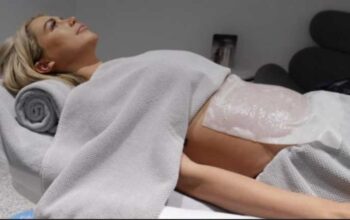How to Restore Your Brows: What You Need to Know
Eyebrows are one of the most important parts of facial symmetry and can make a big difference in your appearance. Men and women with thinning or non-existent eyebrows can improve their appearance through eyebrow hair restoration surgery.
What is Eyebrow Restoration?
Eyebrows are an important part of facial symmetry and frame the eyes. They are also one of the first things people notice about a person. Restoring the natural look of one’s brows may be a satisfying experience for people who endure eyebrow hair loss or overplucking. Eyebrow transplant surgery is a common restorative procedure performed by cosmetic, plastic and dermatological surgeons in clinics worldwide. However, like any surgical treatment, there is a risk of complications. An expert specialized in eyebrow restoration will be able to deliver exceptional results and create a balanced aesthetic appeal to this integral facial feature. They will understand the angle and density of eyebrow hair and can achieve a natural-looking result with meticulous technique and attention to detail.
Other options for eyebrow enhancement include plucking, tweezing, waxing, tattooing, dying and microblading. However, these techniques are temporary and may have unnatural-looking results. Eyebrow hair transplant is an effective and long-lasting solution for patients who want to restore or add thickness to their eyebrows. Choose an expert like Bosley with extensive experience performing follicular unit transplantation for the best aesthetically pleasing results. The surgeon should be able to extract single hair follicles at the right angle to ensure that your eyebrows are as natural-looking as possible. It requires a high level of skill and attention to detail that can only be gained through experience.
Follicular Unit Transplant (FUT)
The FUT (Follicular Unit Transplant) method is a common hair restoration procedure that utilizes follicles in naturally occurring groups of one to four. These follicular units contain sebaceous glands, nerves, and small muscles. This technique allows our surgeons to transplant thousands of follicles in a single session, which improves your aesthetic outcomes. In addition, since these naturally-occurring units have identical structures to surrounding follicles, your new growth will look more natural.
During the FUT procedure, we remove a strip of scalp from the back of your head to extract your follicles. After removing the hairs from the strip, we’ll suture it closed. The result is a small linear scar that will hide when your eyebrows grow out. After your procedure, you’ll be given a sterile bandage to wear while the donor site heals. We’ll prescribe oral pain medication to relieve discomfort. We also provide thorough shampooing and grooming instructions to ensure the wound heals properly.
Follicular Unit Excision (FUE)
FUE is a surgical hair restoration technique that removes individual healthy hair follicles from the scalp, which are genetically programmed to continue growing forever. Unlike FUT, which harvests a strip of skin with the follicles inside, FUE extracts each follicular unit, or graft, individually and directly from the scalp. Follicular units are small groups of 1, 2, and 3 or 4 hairs, which grow together on the scalp in natural patterns. The follicular units are then transplanted to areas that are thinning or balding following the same natural patterns of growth, thereby producing the appearance of naturally full, thicker hair in those areas. The most common complication of FUE is a follicular unit transaction, which occurs when the sharp circular blade of a punch fails to enclose a follicular unit (FU) fully and cuts a portion of it. The damaged follicle may die or fail to thrive once it is transplanted. FUE is also prone to burying, which occurs when the blunt dissection process of a needle or punch pushes a buried FU deeper into the surrounding tissue.
While several technological advancements in motorized punches, blunter punches, and suction-assisted FUE have reduced the potential for transection and burying, a significant learning curve remains for physicians who wish to achieve skilled FUE donor harvesting. This long and time-consuming training requirement is why physicians who perform FUE are often tempted to delegate follicular unit extraction to technicians, which is unethical and can lead to suboptimal results.
Microblading
Microblading is a popular eyebrow-enhancing treatment that involves etching color pigments into the skin using a fine-tipped tool to mimic real hairs. The tattooed brow is semi-permanent, which means it will fade with time and require touch-ups. However, depending on your skin type and lifestyle, it can last up to three years. To begin, the esthetician will map and outline the brows. Then, a topical anesthetic is applied to the area. Then, the artist will make a first pass with the microblading tool (without pigment) to lay down where the “hairs” should be. After the numbing sets, she will do a second pass with the means and apply the pigment. The final result is similar to a traditional tattoo.
After the brows heal, it’s important to follow the aftercare instructions given to you by your artist. It includes not getting the area wet, which can cause the scabs to fall off prematurely. Don’t pick at scabs, either; you can get an infection if you do. It would help to avoid saunas, swimming, and excessive sweating, which can fade the ink faster. If you decide to do a touch-up, your practitioner will look at how the brows healed and go back over any strokes that were too light or didn’t take. Touch-ups can be as simple as filling in the color, or the retouch may involve a full reapplication of the pigment to create a more vibrant look.




